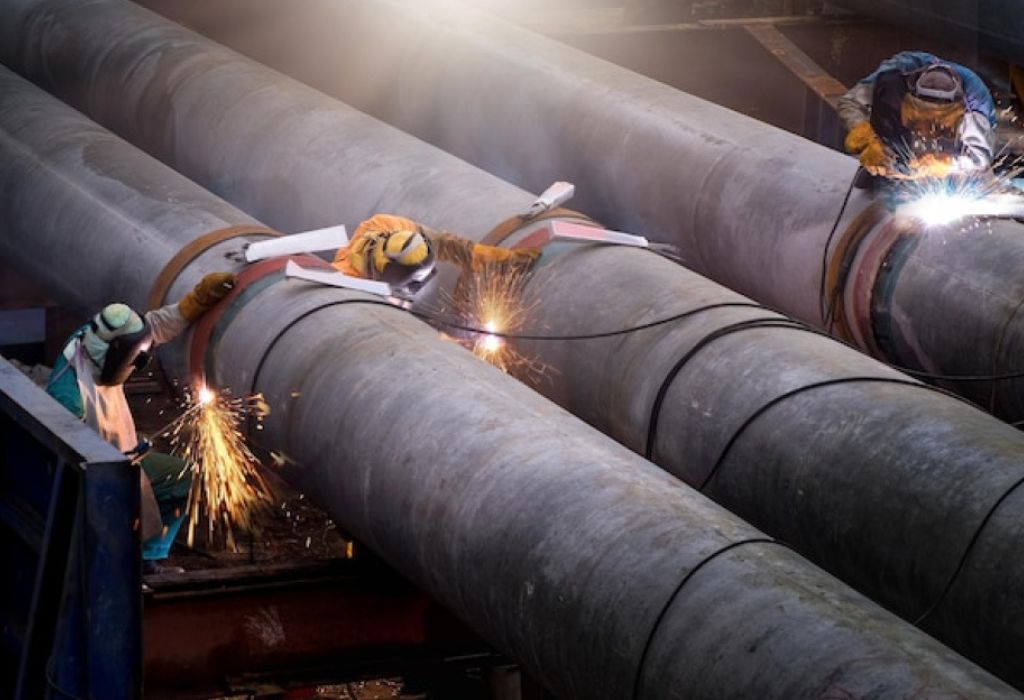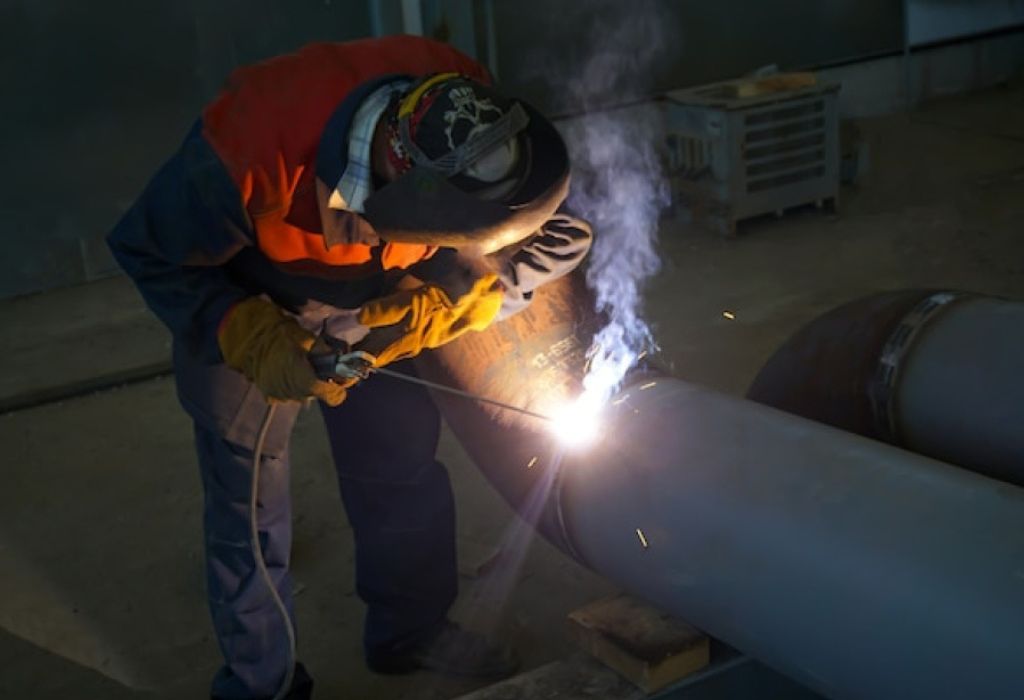The sun rises over a remote stretch of land as crews prepare to weld a section of pipe that will carry fuel across hundreds of miles.
In this high-pressure environment, a pipeliner welder’s skill determines whether the project continues on schedule or halts at great cost.
Pipeline welding is not just another welding job. It involves working on oil, gas, and utility pipelines under strict codes, with inspections that often require X-ray precision.
One mistake can mean costly delays or safety risks, making the role both challenging and highly respected.
The demand for pipeline welders continues to grow as energy infrastructure expands.
The Bureau of Labor Statistics projects over 42,000 welding job openings each year in the United States through 2032, with pipeline work among the highest-paying specialties (BLS
).
The financial rewards can be significant. Experienced pipeliner welders often earn six-figure incomes by combining technical expertise with the ability to travel where projects are located.
Pay is boosted by per diem allowances, overtime opportunities, and demand for certified specialists.
Curiosity naturally arises: how does someone go from a beginner with basic welding knowledge to a skilled pipeliner trusted on major projects?
The journey requires mastering specialized downhill stick welding techniques, passing rigorous certification tests such as API 1104, and building the discipline to work safely in remote and demanding conditions.
This guide explains exactly how to become a pipeliner welder in 2025.
It covers the skills, certifications, tools, career paths, and future opportunities that make this trade both rewarding and essential in today’s energy-driven world.
What a Pipeliner Welder Actually Does

A pipeliner welder specializes in joining and repairing pipelines that transport oil, gas, and other resources. Their work often takes place outdoors, far from shops, under demanding schedules.
These welders must complete long stretches of welds with consistent quality and pass strict inspection standards. Their jobs often involve tie-ins, mainline welds, and station work.
Crews are usually large, with welders working alongside helpers, fitters, inspectors, and coating specialists. Every step is regulated to ensure safety and integrity.
Each weld is tested through non-destructive methods such as X-ray or ultrasonic inspection. If a weld fails, it must be repaired immediately to avoid project delays.
Where do pipeliner welders work?
On cross-country pipelines, compressor stations, utility projects, and refineries.
What welding process is most common?
Downhill stick welding (SMAW) using 6010 or 7010 rods.
Who is part of a pipeline crew?
Helpers, welders, fitters, inspectors, equipment operators, and coating teams.
How are welds inspected?
Through visual checks and NDE like X-ray or ultrasonic testing.
Is pipeline welding seasonal?
Yes, many jobs depend on weather, creating peak and off-seasons.
Essential Skills for Pipeline Welding
Success in pipeline welding comes down to process mastery, consistency, and discipline. Welders must control heat, maintain steady travel speed, and adapt to difficult positions.
The industry standard is downhill stick welding, which allows faster deposition and effective penetration. TIG welding may also be required for root passes in certain specifications.
Fit-up and preparation are critical. A poor bevel or misaligned pipe increases the chance of weld defects and rejection during inspection.
Strong problem-solving skills are equally important. Pipeline welders often work in remote areas where every decision affects productivity and safety.
Why downhill stick welding?
It provides fast deposition and control over long seams.
Is TIG welding needed for pipelines?
Yes, for root passes in stations or alloy materials.
Why is fit-up so important?
Proper alignment ensures root consistency and fewer defects.
What positions do pipeliners weld in?
5G and 6G positions on large-diameter pipe.
How do welders improve quickly?
By practicing timed coupons and cutting them open for inspection.
Training Paths: School, Union, or Helper-to-Welder
There are several routes to becoming a pipeliner welder. Trade schools and community colleges provide structured training in pipe welding basics.
Union apprenticeships combine classroom instruction with paid field experience, offering steady progression. Non-union contractors may also train welders on the job.
Another traditional route is starting as a helper. By assisting experienced welders, helpers learn setup, fit-up, and safety before testing into welder positions.
Each path has advantages. Schools build fundamentals, unions provide structured benefits, and the helper path offers hands-on experience.
Is school required to become a pipeliner welder?
No, but it speeds up training.
How do union programs work?
They combine paid work with classroom training.
Can helpers move up?
Yes, helpers often test into welding roles after gaining experience.
How long to gain employable skills?
6 to 18 months with focused training.
What should programs include?
Open-root pipe welding, WPS reading, and safety procedures.
Certifications & Codes You’ll Need

Certification is mandatory for pipeliner welders. The most recognized code is API 1104, which governs pipeline welding standards.
ASME Section IX is also important for pressure piping and station work. Contractors may require welders to test to specific procedures.
Tests typically involve welding pipe in 5G or 6G positions, with results verified by X-ray or bend tests. Passing demonstrates skill and reliability.
Maintaining continuity logs ensures welders remain certified and ready for work. Retesting is required if logs lapse or codes change.
Which certification is most important?
API 1104 for cross-country pipelines.
Do certs transfer between employers?
No, most contractors require retesting.
How often must certs be renewed?
Every 6 months unless continuity is maintained.
What tests are common?
5G or 6G pipe with downhill SMAW passes.
Do you need inspector credentials?
No, inspectors hold CWI or NDT certifications.
Tools, Rig, and Field Kit
Starting as a pipeliner welder requires basic tools and PPE. Over time, welders invest in a full rig truck or trailer setup.
Engine-driven welders are standard, providing power in remote areas. Diesel units with high duty cycles are preferred.
Other essentials include grinders, beveling tools, wedges, clamps, FR clothing, auto-darkening helmets, and consumables. Proper storage protects gear in tough conditions.
Can you start without a truck rig?
Yes, as a helper or company welder.
Which welder is best?
Diesel engine-drive welders with auxiliary power.
Do you need beveling machines?
Not at first—grinders are enough until higher volume work.
What consumables are required?
Cellulosic rods, flap discs, wheels, wedges, and soapstone.
How to protect equipment?
Use weatherproof storage and inspect leads daily.
Health, Safety & Compliance
Pipeline welding has strict safety requirements. Hot-work permits, fire prevention, and fume control are standard.
PPE includes FR clothing, helmets, gloves, boots, and hearing protection. Ventilation and gas monitoring protect against hazardous fumes.
Compliance with OSHA, NFPA, and PHMSA standards ensures both worker and public safety. Documentation of training and permits is mandatory.
What are top hazards?
Fire, fumes, equipment, and weather conditions.
Which PPE is required?
FR clothing, helmet, gloves, boots, and safety glasses.
Why is fume control vital?
It prevents acute and long-term health risks.
Who enforces safety?
Contractors, OSHA, and client policies.
What documents are required?
Hot-work permits, JHAs, and training records.
Getting Hired: Helper to Welder
Most pipeliners begin as helpers. This entry-level role provides exposure to field conditions and introduces safety procedures.
To become a welder, candidates must pass a strict weld test. These tests are timed and inspected by X-ray or bend testing.
Networking, union halls, and contractor postings are common ways to find opportunities. Reliability and safety discipline matter as much as skill.
How do you find tests?
Union halls, contractor lists, and referrals.
What is on the test?
Root, hot pass, fill, and cap under inspection.
Why do most candidates fail?
Inconsistent roots and cap undercut.
Do soft skills matter?
Yes, safety and teamwork are essential.
Can beginners test directly?
Most start as helpers before testing.
Union vs Non-Union
Union welders gain benefits such as healthcare, pensions, and structured pay. Non-union welders may have more flexibility but less security.
Union halls provide training and consistent referrals. Non-union welders often rely on word-of-mouth or traveling for opportunities.
Which pays more?
Union jobs offer higher base pay with benefits, but non-union may pay more short-term.
Do unions provide training?
Yes, through apprenticeships and upgrade classes.
Can welders switch between systems?
Yes, but rules differ.
Is per diem included?
Yes, most pipeline jobs include per diem allowances.
Do unions help during slow seasons?
Yes, with resources and referrals.
Income, Rates & Lifestyle

Pipeline welding can be lucrative. Many earn six figures during peak projects.
Per diem, travel pay, and overtime add significantly to income. However, expenses such as fuel and lodging reduce net earnings.
The lifestyle requires travel, long hours, and time away from family. Saving during peak seasons is essential.
How much do pipeliner welders make?
Top earners exceed $100,000 annually.
Is overtime common?
Yes, especially during tight deadlines.
What expenses reduce income?
Travel, lodging, rig fuel, and maintenance.
How do welders stay booked?
By maintaining certs and networking.
Is it a family-friendly career?
It can be challenging due to long travel periods.
Advancement & Future Trends
With experience, welders can advance to rig ownership, foreman roles, or inspector positions. Additional certifications expand opportunities.
Future trends include bug rigs for orbital welding, digital WPS records, and hydrogen pipeline projects. Automation will support but not replace human welders.
When should welders buy rigs?
After consistent work and proven reliability.
How to move into inspection?
Pursue CWI or NDT certifications.
Will robots replace pipeliners?
Not for irregular field welds.
What new markets are growing?
Hydrogen and CO₂ pipelines.
How to future-proof a career?
Keep upgrading skills and staying compliant with codes.
Conclusion
Pipeline welding is one of the most challenging and rewarding careers in the welding trade. It demands precision, discipline, and the ability to work under pressure.
The path to becoming a pipeliner welder involves mastering core skills, earning certifications like API 1104, investing in proper tools, and building a reputation for quality.
Earnings can be high, but the lifestyle requires sacrifice and commitment. For those ready to embrace the challenge, the rewards include financial independence and the satisfaction of keeping vital energy infrastructure running.
If you want to know how to become a pipeliner welder in 2025, the answer is clear. Learn the skills, pass the tests, stay safe, and commit to excellence—the industry is waiting.

I’m Darrell Julian, the founder, lead writer, and hands-on welding enthusiast behind ArcWeldingPro.com. With more than 15 years of real-world welding experience, I created this platform to share what I’ve learned in the field, in the shop, and in the heat of the arc.


